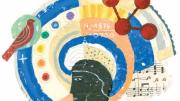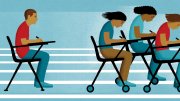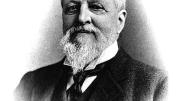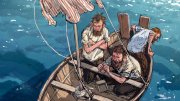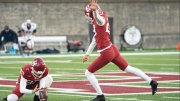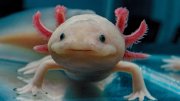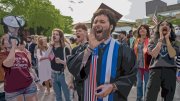In a single undergraduate course last fall, students tackled all of the following: engineering nanofood particles to combat childhood obesity; revising scientific research and publication practices to encourage cooperation; using on-line social networking to connect entrepreneurs with venture capital; and designing keyboards that prevent repetitive-stress injuries.
The course, new this academic year, defies classification in a traditional academic discipline. Though offered through the School of Engineering and Applied Sciences (where its instructor, McKay professor of the practice of biomedical engineering David Edwards, has his appointment), the course nevertheless did not count for concentration credit in engineering. Students who enrolled came from concentrations all over the map: chemistry, physics, computer science, economics, government, literature, Romance languages, philosophy, visual and environmental studies. The whole point of Engineering Sciences 147, “Idea Translation: Effecting Change through the Arts and Sciences,” is to blur the lines between disciplines and craft solutions that draw on several.
Edwards observed that Harvard students tend to excel at many things upon arrival, but are then forced to choose one—mathematics or music theory, biology or writing—that becomes their focus. His thesis is that the structure of modern-day universities discourages effective problem-solving in the wider world. When boundaries are blurred, “the fused method that results, at once aesthetic and scientific—intuitive and deductive, sensual and analytical, comfortable with uncertainty and able to frame a problem, embracing nature in its complexity and able to simplify to nature in its essence—this is what I call ArtScience,” he writes in his book on the concept, ArtScience: Creativity in the Post-Google Generation (forthcoming from Harvard University Press).
Edwards’s own life is the basis for his theory. He holds a doctorate in chemical engineering and taught in that field at several institutions before coming to Harvard in 2002. He also started two companies and patented nanoparticles designed to deliver drugs through the lungs. Though science has been his livelihood, Edwards writes fiction and serves on the advisory board for the American Repertory Theatre. He credits his artistic pursuits with enabling him to approach problems in novel ways.
In his course, Edwards has students plot their problem-solving processes on “idea maps” to show how they have transcended barriers among society, culture, industry, and research and education. He brings in “idea translators”: people who have brought a big idea to fruition. Guest speakers last fall included a concert pianist who earned a doctorate in electrical engineering and developed a technique for musical variation based on the principles of chaos theory, and a physician, an infectious-disease scientist, who has used theater and photography to communicate the urgent problems caused by land mines, tuberculosis, and HIV in the developing world.
The idea that art and science can seed each other and thrive in one another’s presence is not new. Edwards’s book cites many previous works on the topic, as well as a 1995 conference in Brussels titled “Einstein Meets Magritte.” His own addition is the undergraduate course, although he has also cobbled together money from the engineering school and the provost’s office to enable students from the course to pursue their ideas. (His Idea Translation Lab was co-founded with Paul Bottino, executive director of Harvard’s Technology and Entrepreneurship Center, who collaborated with Edwards in designing and teaching the course.) One group of students has already filed a provisional patent application for uses of microfluidics in architecture (for example, a window at an airport gate might announce “Now boarding” by using liquid that moves through the glass).
Powerful and time-honored institutions such as Harvard naturally develop a resistance to change, Edwards argues, and universities must counteract this, not just by rewarding creativity and innovation, but by building an institutional culture that supports those qualities. “This class,” he told the audience on the day his students presented their projects on the main stage of the Loeb Drama Center, “is about empowering students by emboldening them to dream.”
~Elizabeth Gudrais
David Edwards e-mail address: dedwards@deas.harvard.edu
